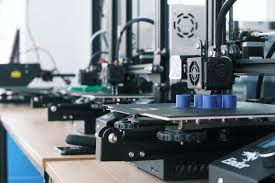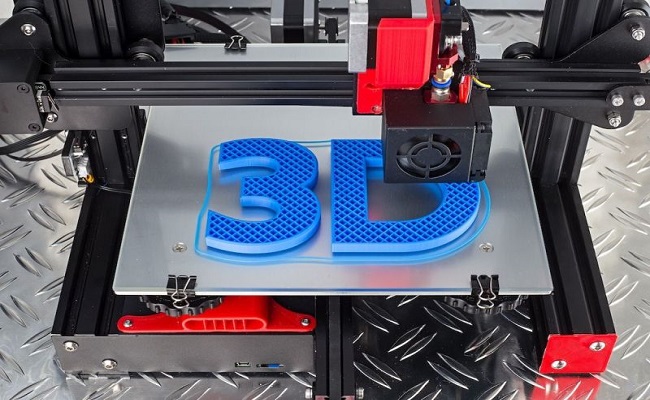Introduction to 5starsstocks.com 3D Printing Stocks
The realm of 3D printing, also known as additive manufacturing, has evolved from a niche technology into a transformative force across various industries. From healthcare and aerospace to automotive and consumer goods, 3D printing is revolutionizing production methods, enabling rapid prototyping, customization, and on-demand manufacturing. As this technology continues to mature, investors are keenly observing the market for lucrative opportunities. One platform that has emerged as a valuable resource for identifying promising investment avenues in this sector is 5starsstocks.com 3D printing stocks.Business to Mark+15Starsstocks Tech+15Starsstocks Tech
5starsstocks.com 3D printing stocks offers comprehensive insights into the most promising companies within the 3D printing industry. By analyzing market trends, technological advancements, and financial performance, the platform provides investors with the tools necessary to make informed decisions. In this article, we delve into the significance of 3D printing stocks, explore top companies featured on 5starsstocks.com 3D printing stocks, and discuss the factors influencing investment in this dynamic sector.5StarsStocks .com+25starsstocks.pro+2Investopedia+2
Understanding the 3D Printing Industry
What Is 3D Printing?
3D printing is an additive manufacturing process that creates three-dimensional objects by layering materials based on digital models. Unlike traditional subtractive manufacturing methods, which involve cutting away material from a solid block, 3D printing builds objects layer by layer, allowing for intricate designs and reduced material waste. This technology has found applications in various fields, including prototyping, tooling, medical devices, aerospace components, and consumer products.Business to Mark

Market Growth and Potential
The global 3D printing market has experienced significant growth over the past decade. According to projections, the market is expected to reach $50 billion by 2030, growing at a compound annual growth rate (CAGR) of approximately 20%. This growth is driven by advancements in printing technologies, the increasing demand for customized products, and the adoption of 3D printing across diverse industries.Business to Mark
Investment Opportunities in 3D Printing
Investing in 3D printing stocks offers exposure to a transformative industry with substantial growth potential. Companies in this sector are at the forefront of technological innovation, developing new materials, improving printing speeds, and expanding applications. By identifying and investing in leading firms, investors can capitalize on the industry’s expansion and technological advancements.5StarsStocks .com+4Business to Mark+4Celeb Vision+4
Top Companies Featured on 5starsstocks.com 3D Printing Stocks
1. Stratasys Ltd. (SSYS)
Stratasys is a pioneer in the 3D printing industry, offering a wide range of additive manufacturing solutions for various sectors, including aerospace, automotive, and healthcare. The company’s FDM (Fused Deposition Modeling) and PolyJet technologies are widely used for rapid prototyping and production-grade parts. Stratasys has consistently demonstrated strong financial growth and offers promising long-term prospects.5Starsstocks Techinformativehaven.com+15Starsstocks Tech+1
2. Velo3D (VLD)
Velo3D specializes in metal 3D printing, focusing on high-performance parts for industries such as aerospace and energy. The company’s advanced printing systems can produce complex geometries and high-precision components, making it a key player in the growing metal 3D printing space. Investors can expect significant growth as demand for these capabilities increases.informativehaven.com+15Starsstocks Tech+1
3. Nano Dimension (NNDM)
Nano Dimension is transforming the 3D printing industry with its focus on printed electronics. The company has developed a revolutionary 3D printing technology capable of printing functional electronic circuits, including PCBs (printed circuit boards). Nano Dimension is well-positioned for success as the market for 3D printed electronics grows, especially in sectors like consumer electronics, automotive, and aerospace.informativehaven.com+15starsstocks.pro+1

4. Desktop Metal (DM)
Desktop Metal designs and manufactures 3D printing systems for various industries, including automotive, consumer goods, and machine design. The company’s focus on speed and reliability in 3D printing systems positions it as a leader in the industry. Desktop Metal’s expansion into healthcare through its Desktop Health division further diversifies its portfolio, offering products in dentistry, orthodontics, dermatology, orthopedics, cardiology, plastic surgery, and regenerative medicine.5starsstocks.pro+2Investopedia+2en.wikipedia.org+2en.wikipedia.org+1Investopedia+1
5. Formlabs
Formlabs is known for its high-resolution SLA (Stereolithography) and SLS (Selective Laser Sintering) 3D printers, catering to industries such as healthcare, automotive, and consumer products. The company’s commitment to innovation and quality has established it as a prominent player in the 3D printing market.5starsstocks.pro
Also Read: Success100x.com Factors: Unlocking the Path to Exponential Growth
Factors Influencing Investment in 3D Printing Stocks
Technological Advancements
Continuous improvements in 3D printing technologies, such as the development of new materials, faster printing speeds, and enhanced precision, are driving the growth of the industry. Companies that lead in technological innovation are well-positioned to capture market share and deliver value to investors.
Industry Adoption
The increasing adoption of 3D printing across various industries, including aerospace, automotive, healthcare, and consumer goods, is expanding the market for additive manufacturing solutions. As more companies integrate 3D printing into their production processes, the demand for advanced printing technologies rises, benefiting companies in the sector.5starsstocks.pro
Regulatory Environment
The regulatory landscape plays a crucial role in shaping the growth of the 3D printing industry. Government policies and regulations related to intellectual property, product safety, and environmental standards can impact the operations of 3D printing companies. Investors should monitor regulatory developments to assess potential risks and opportunities.
Market Competition
The 3D printing industry is highly competitive, with numerous companies vying for market share. Firms that differentiate themselves through technological innovation, strategic partnerships, and strong customer relationships are more likely to succeed. Investors should evaluate the competitive positioning of companies to identify those with a sustainable advantage.
